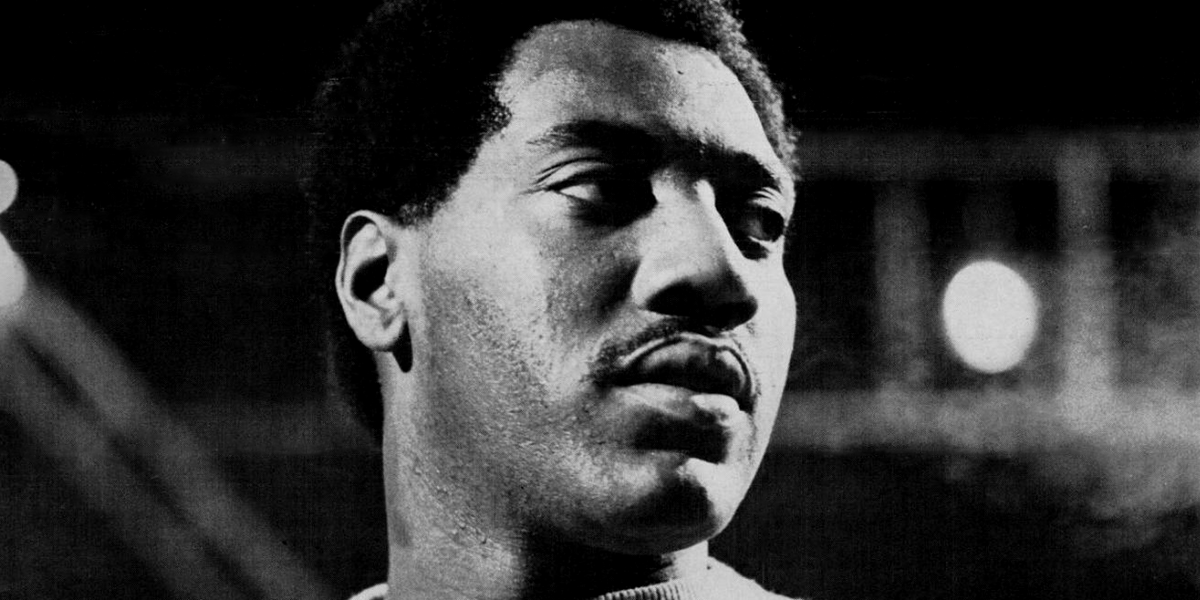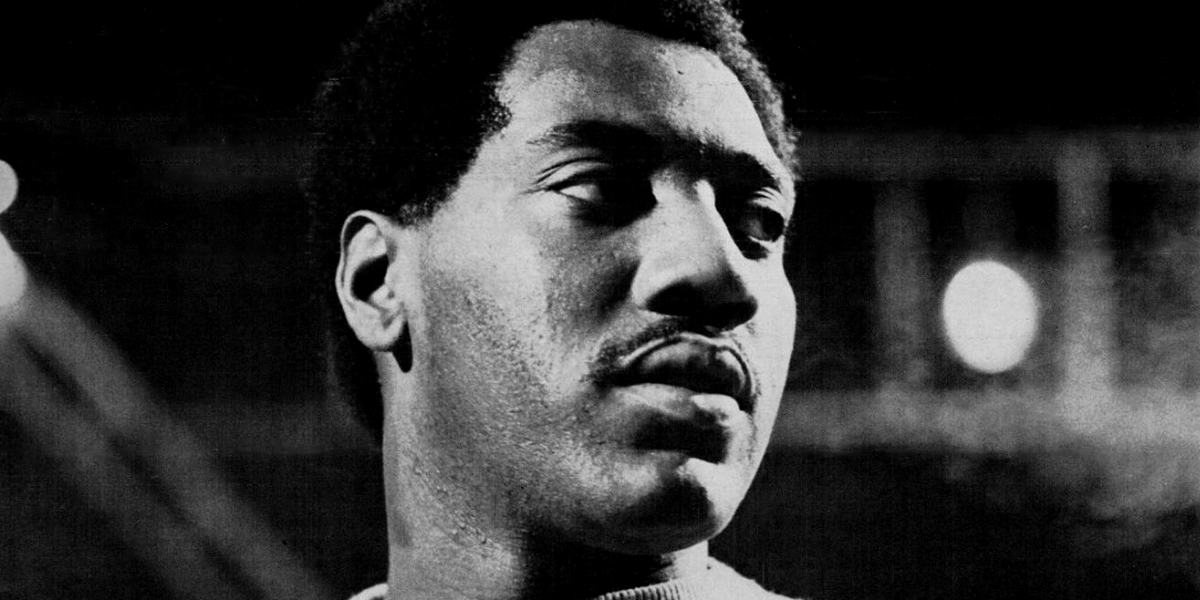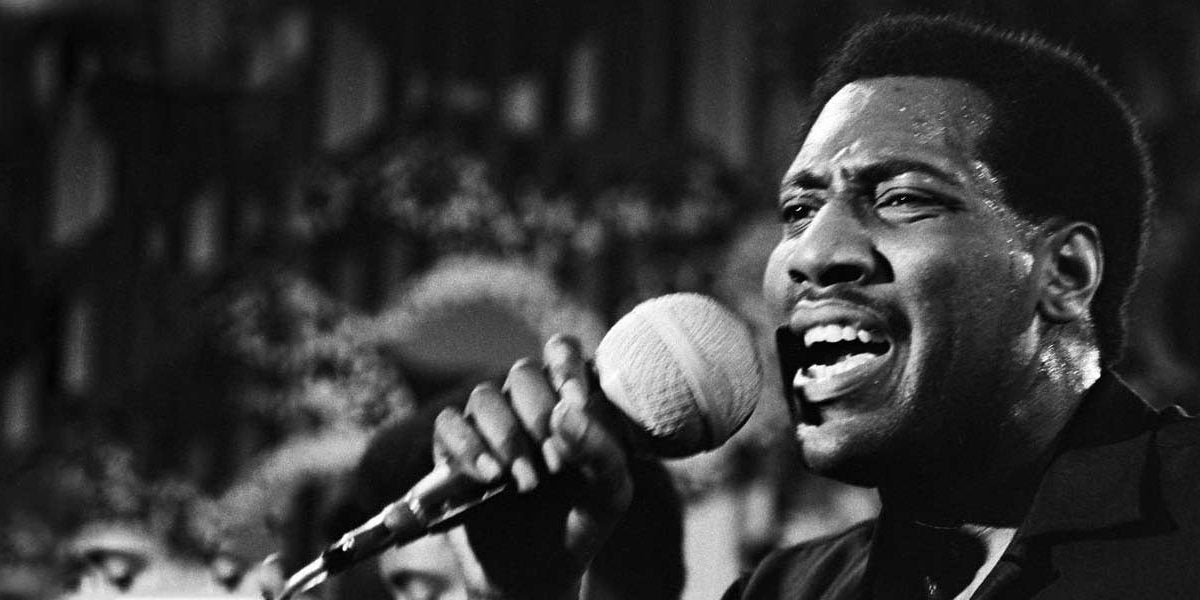Otis Redding’s Last Studio Stand
Read The Liner Notes For Our New Edition Of ‘The Immortal Otis Redding’
“Otis Redding was a natural prince. When you were with him, he communicated love and a tremendous faith in human possibility, a promise that great and happy events were coming.” — Jerry Wexler, Atlantic Records executive, at Otis Redding’s funeral in December, 1967.
It was November, 1967, and Otis Redding was about to do what he always did when he wasn’t on the road: Head into the studio at Stax Records, located then, as it is now, at 926 E. McLemore Ave., in Memphis, Tennessee. Redding had been through it all in 1967, high highs and lows that included a vocal cord surgery, but word got around that he was back and ready to record, and had a whole pile of songs to work on. And so the Stax house band — Booker T. and the M.G.’s, and the Memphis Horns — began pulling marathon sessions to keep up with Redding, who seemed to live at the studio for a few weeks in November and December 1967, spending the day with the band cutting the full songs, while spending the night writing and sketching out songs in the studio alongside his producer Steve Cropper, and for a few songs at least, friend and fellow R&B star Don Covay.
These sessions would live in infamy at Stax. “That was our first real insanity at Stax,” Booker T. Jones told Jonathan Gould in Otis Redding: An Unfinished Life. “We were in the studio until two or three in the morning, and then back again at 10 a.m., recording all the time. Through it all, he was electric… obviously.” The sessions would yield more than 20 songs, which would form the backbone of three Otis Redding records. A few weeks turned into three albums, by sheer force of will and songwriting frenzy. The sessions ended on December 8, when Redding hit the road on a scheduled Midwest tour with the Bar-Kays.
He’d never step foot inside Stax studios again.
By the time you read this it will have been 52 years since Otis Redding’s plane went down over Lake Monona in Madison, Wisconsin. He and his mostly teenage band, the Bar-Kays, missed the airport by under four miles, hitting an icy lake. Redding and all members of the band — with the exception of trumpeter Ben Cauley, who clung to his seat, and James Alexander, who was flying commercial and had to identify the bodies — died on impact or drowned. Redding was only 26 on December 10, 1967, and only five years into his solo music career. It’s one thing to say that someone was, “just getting started” when they cruelly and unjustly die before their time, but it’s another to apply that signifier to Otis Redding. He’d only just begun; he’d made a handful of increasingly superlative soul albums, but the feeling was that his best music was on the cusp of getting made, and that he was on the verge of being the biggest soul singer on earth.
1967 was the year of Otis Redding. He started the year on a Stax package tour of Europe, where he won over an international audience for the Stax soul sound, a tour later immortalized on the July 1967 album, Live In Europe. While Redding was touring in Europe, back at home, King And Queen, a duets album with the Memphis Queen of Soul, Carla Thomas (her Comfort Me was VMP Classics No. 5), was released, and would eventually hit No. 5 on the Billboard R&B album charts. Meanwhile, Aretha Franklin had taken “Respect,” an Otis Blue single from 1965, and turned it into her signature song, and one of the best selling singles of 1967. Inspired by his new publishing income, Redding turned into a talent scout and writer for Atlantic Records, bringing them Arthur Conley, and co-writing Conley’s biggest hit, 1967’s “Sweet Soul Music.”
But Redding’s biggest moment in 1967 came when a bunch of hippies in Monterey, California, hatched a plan to hold a couple-day rock festival, meant to prove once and for all that rock music was a vital art, as worthy of festivals and critical thought as folk and jazz. Hatched by manager Lou Adler and John Phillips of the Mamas and the Papas, among others, the festival would go down in history as the Monterey Pop Festival, a three day monument to rock that included breakout performances from Janis Joplin and Jimi Hendrix (who famously lit his guitar on fire). But coming out of the festival, the biggest star was Redding, who didn’t even want to perform — the fest didn’t pay — until he realized it might be an opportunity to play to a mostly white audience who hadn’t been exposed to his music. Veni, vidi, vici, as they say, as basically everyone in attendance — including members of other bands — remembered Redding’s green suit and the way he tore the whole crowd of 10,000-plus down.
It became clear to Redding that things were changing out there, and that the kids with hair past their ears might be ready to hear soul music. Redding went back on the road, playing increasingly bigger venues, and picking up accolades like No. 1 Male Vocalist Of The Year by the readers of Melody Maker, a British music magazine, who picked Redding over the likes of any singing member of the Beatles.
In the fall of 1967, however, Redding’ fortunes turned: All the touring and recording had taken a toll on his voice, and a visit to the doctor determined that he had polyps on his vocal cords. He had to have surgery, and was under strict doctor’s orders to talk as little as possible, and not sing a single lick for a month. According to Gould’s book, Redding was able to find the lightness in the time off; he pranked his manager into believing that the surgery failed and he had no more voice. But mostly he sat around and listened to a recently released masterpiece: Sgt. Pepper’s Lonely Hearts Club Band.
It’s the stuff of biopics, to imagine Redding, unable to sing, deconstructing the peak Summer of Love album, but it doesn’t take much to get from Sgt. Pepper to any number of tracks in Redding’ post-1967 songbook, from “Dock Of The Bay” to Immortal’s “Champagne and Wine” and “Nobody’s Fault But Mine.” If nothing else, you can tell that spending his month-long convalescence waiting to try to top the Beatles meant that Redding piled up songs, ideas, and inspiration. When he was sure his voice was back in November, 1967, he recorded like a man possessed, according to Mark Ribowksy’s Dreams to Remember, recording so many songs that most of them don’t have proper session paperwork to prove when in the frenzy they were recorded or who exactly played on them. It’s tempting to paint these sessions with some kind of “He knew his time was short,” 20/20 hindsight — as some of Redding’s fellow musicians do in interviews — but these songs didn’t need that kind of higher mission; this was Redding realizing that it was time to seize the throne, that all the work he’d done in his career was leading him to his next album, which would have the best songs of his career.
Though The Dock Of The Bay was the first posthumous album from Redding and, as it remains, his best selling album ever, it did not capture the frenzied sessions that Redding and the Stax house band got into in those weeks. “(Sittin’ On) The Dock Of The Bay,” the album’s centerpiece and Redding’s greatest single song, was the only track on the album culled from those sessions; the rest of the album was filled with previously released non-album singles (like “I Love You More Than Words Can Say”), and recent singles from past albums (“Tramp” and “Ole Man Trouble”). This assemblage of known singles and B-sides makes sense; Atlantic and Stax knew that the audience for Redding was going to be at an all-time high, and The Dock Of The Bay was an opportunity for them to introduce new fans to the different sides of Redding.
The Immortal Otis Redding, however, is something altogether different; it might be Redding’s finest full-length album achievement, a record that captures his dexterity with raveups and ballads and gospel tracks alike. It features his finest songwriting, and showcases his raw magnetism, and his ability to will transcendent performances out of all of the musicians working with him.
The album opens with “Dreams to Remember,” the oldest song on the album, recorded sometime in early 1967, after Redding got back from Europe and his triumphant sets across the continent. His wife, Zelma, had written lyrics to Redding while he was gone, and according to Gould’s book, Redding seemed dismissive of the song when he first saw it. But he pulled the lyrics from his wife out and recorded the song mostly in secret, not telling her he had pulled it back out until the song was completed. Redding sings delicately over a buzzing organ and a plucked guitar; he was known for the knee-dropping power of his voice, but here he sings, as he says in the lyrics, “so tenderly.”
Of the songs recorded during the late 1967 whirlwind, Redding stomps and hollers over “Nobody’s Fault But Mine” — featuring some of Steve Cropper’s cleanest guitar lines — and gives a sequel to “Fa-Fa-Fa-Fa-Fa (Sad Song)” with the more pensive and summer-ready “The Happy Song (Dum Dum).” He soars and howls on “Thousand Miles Away,” and delivers one of his most wrenching vocal performances on the ballad “A Fool for You.”
It’s here where we get to “Hard to Handle,” probably this album’s most well-known song, due to a cover that was released 23 years after Redding’s death. The Black Crowes, the southern-fried jam band, covered the song on their 1990 debut LP, Shake Your Money Maker, lodging what is arguably their best-known song and breakout single (it went to No. 1 on Billboard’s rock charts). The Crowes likely picked it up from the Grateful Dead — who played a cover version in their sets in the early ’70s — and the Crowes’ version has launched many other cover versions.
It should surprise no one reading that none of the non-Redding versions capture the pure sass he brings to his take, practically singing the “Boys will come a dime a dozen, but that ain’t nothin’ but 10-cent lovin’” in italics. His narrator isn’t pleading; he’s confident and sure of himself, and doesn’t actually need to sell his bedside bonafides, but is doing it anyway. It’s like Coke advertising during the Super Bowl. Booker T. and company shuffle under and around Redding, him punching in and outside of the beat, with the Memphis Horns announcing themselves in the pre-verse as Redding’s raiding war party. The idea that this song, so perfect, so powerful, was recorded as just another rank-and-file single in a frenzy of sessions is all the more testament to the magic happening on McLemore Avenue in 1967.
The album closes with one of the most show-stopping vocal performances in Redding’s catalog, proving to everyone that his vocal cords were fine. “Amen” is a mashup of sorts between the church songs “Amen” and “This Little Light Of Mine,” with Redding firmly in preacher mode, the job his dad wanted him to have all along. He’s directing traffic with the band — one of the most underrated skills Redding had, especially on live recordings, was turning band directions into hooks — and giving himself reminders to sing with more feeling. The Immortal Otis Redding ends like a church service, a fitting end to the first full album from Redding after his death; it’s impossible to end “Amen” without wet eyes.
What often gets lost in stories of Redding’s career is how far he’d come as a songwriter, and how rare a talent he was on that front. At a time when R&B albums were padded with multiple covers to get them to album-length, The Immortal Otis Redding boasts 8 of 11 originals, written at least in part by Redding. That was basically unheard of in that era; there wasn’t anyone at Stax or Motown — the twin pillars of R&B — who could claim that high of a self-penned percentage ratio. Redding’s voice is the first thing you think of when you think of him, but if he’d had more time, his words might have taken center stage.
Coming four months after The Dock Of The Bay, The Immortal Otis Redding was one of Redding’s commercially best performing LPs, hitting No. 3 on the Billboard R&B album charts, and No. 58 on the pop chart (it charted while The Dock Of The Bay was still higher up the charts, topping out at No. 4). All four of its singles — “Amen,” “I’ve Got Dreams To Remember, “The Happy Song” and “Hard to Handle” — hit the top 40 of the R&B charts. It’s also one of his most critically successful albums; it regularly appeared in lists of the best rock ’n’ roll albums ever made until the critical discourse around earlier Redding albums took over.
There would be two more posthumously released albums, 1969’s Love Man and 1970’s Tell The Truth, both with their strong deep cuts, and worth seeking out. Along with The Immortal Otis Redding, they form the last dispatch from one of the biggest what-ifs in music history. Otis Redding decamped to Stax for a few weeks in late 1967, for iconic and lasting sessions of peak creativity. We’ll never know what might have been, but The Immortal Otis Redding gives us a small taste.
Andrew Winistorfer is Senior Director of Music and Editorial at Vinyl Me, Please, and a writer and editor of their books, 100 Albums You Need in Your Collection and The Best Record Stores in the United States. He’s written Listening Notes for more than 30 VMP releases, co-produced multiple VMP Anthologies, and executive produced the VMP Anthologies The Story of Vanguard, The Story of Willie Nelson, Miles Davis: The Electric Years and The Story of Waylon Jennings. He lives in Saint Paul, Minnesota.
Related Articles
Join the Club!
Join Now, Starting at $36Pages








